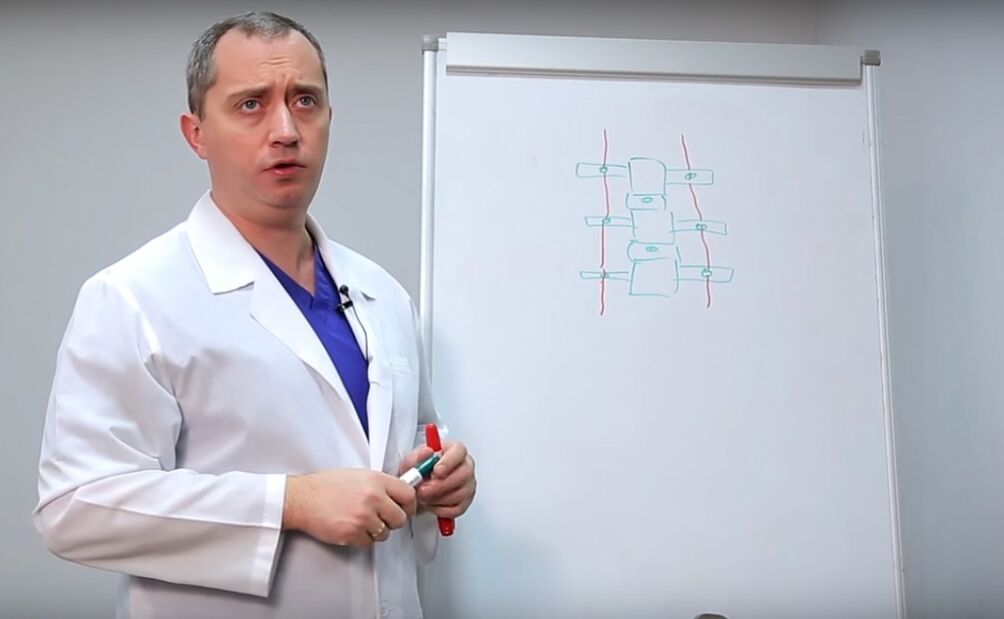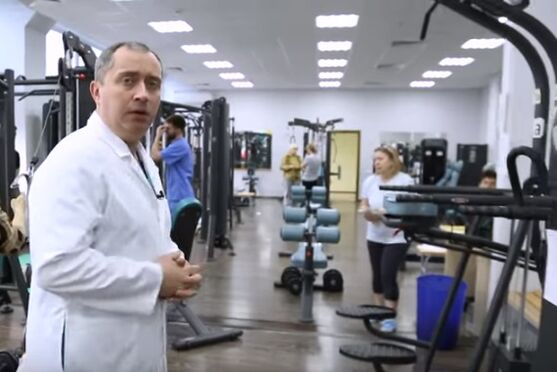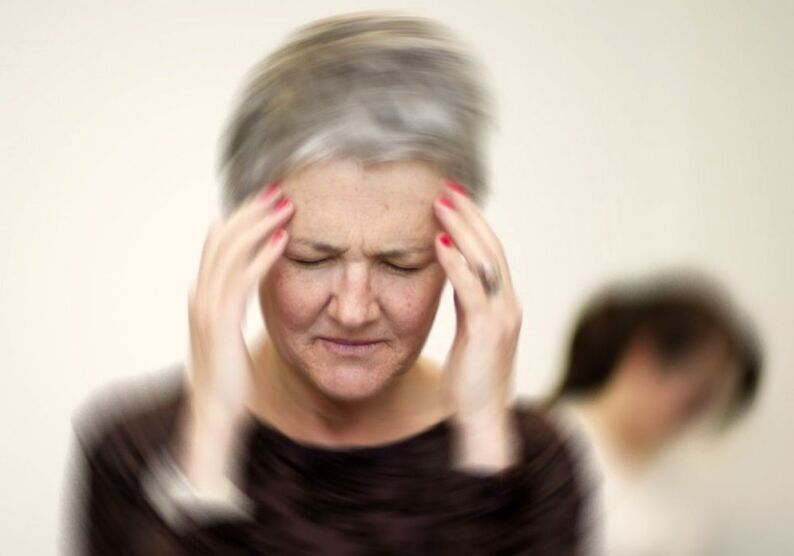Osteochondrosis of the cervical spine is a pathology characterized by the development of destructive depth processes in the tissue of the articular cartilage.These phenomena develop due to the physiological weakening of the diet of the intervertebral discs, which means that the cartilage tissue is poorly regenerated (restored) even after minor microtrauma of the spine.
Most patients, in particular the inactive lifestyle, constantly charge the muscle corset of the neck because they are forced to stay in the same pose for a long time.All of these factors contribute to the development of the disease.
Attention.Cervical osteochondrosis is one of the most dangerous diseases for health and even human life.This is due to the fact that a large number of vital vessels are concentrated in the neck.
A small anatomy
There are cross processes in the structure of all vertebrae of the lumbar, thoracic and cervix parts.
The ribs are bound to the transverse processes in the Brustr region.The bodies of the vertebrae of the lumbar winner are the largest because this department has a significant mass.The deep muscles of the lower back are bound to the transverse processes of the vertebrae of the lumbar vertebrae.There are elastic cartilage between the vertebrae (slices).

Features of the structure
The cervical spine is characterized by some anatomical features.Specialists direct the public's attention that there are only holes in the cross processes of 1-6 cervical vertebrae through the vessels that feed the basic section of the brain (brain stem).
The basal department of the brain can be seen as a "computer center" in which the data from the entire organism is collected and analyzed.The organized organ controls all automatic processes in the body (movement, breathing, temperature, coordination, heartbeat, sweating, etc.).
Council from the doctor.If you have diagnosed cervical osteochondrosis and the supervisor tells you that this is nonsense and this pathology can be healed with ointments and lots, it is better to run from such a doctor as far as possible.
Pathogenesis of osteochondrosis
With cervical osteochondrosis, the vertebrae of the vertebrae are observed in relation to each other, which leads to the compression of the arteries.The compression of these vessels can provoke an ischemic stroke of the brain.Such phenomena are fully fixed.
If a person has a small cervical osteochondrosis, but nobody treated them with minimal mechanical effects or incorrectly treated them, the vertebral shift is observed, the blood circulation is disturbed.Patients often complain about dizziness and nausea.After a while, the patient loses consciousness.This often occurs in people who were injured in an accident.

Clinical signs of the disease
With the development of cervical osteochondrosis, the following symptoms are observed:
- increased sweating;
- Weakening of the muscle frame of the neck;
- Hand deafness;
- Increased fatigue;
- Loss of consciousness;
- Hypertension;
- Nausea and dizziness;
- Problems with the attitude;
- Insomnia;
- limited movements;
- unreasonable bad mood;
- Breast pain;
- A feeling of running goosebumps in the body;
- A crunch can be heard when turning the head;
- Pain in bones and chills;
- sharp pain in the shoulders and in the neck;
- Violation of coordination;
- Problems with eyesight and hearing.
Advice!If you identify the above -mentioned characteristics, you must contact an experienced specialist, therapist, neuropathologists, vertebrologists, traumatologists, cardiologists or surgeon.After a thorough diagnosis, the doctor can diagnose and select the optimal tactics of the treatment.

Complications
Degenerative-dystrophic processes in the tissues of the spine violate the functional activity of this organ.Simply put, there is a "wear" of the spine:
- Restricted mobility of the spine;
- Accept the height of the intervertebral discs;
- the formation of a hypothalamic syndrome;
- Breathing arrest due to damage to the spinal cord;
- Violation of blood flow in the spinal cord;
- Violation of the swallow reflex;
- Functional disorder of internal organs;
- Compression of the nerve;
- Loss of discs;
- Breath of breathing;
- Spinal sales formation;
- Vestibular disorders;
- neurocirculatory dystonia;
- Shoulder -Shoulder -periarthrosis;
- Thyroid dysfunction;
- Epicondalite;
- Stenosis of the intervertebral disc canal;
- The formation of proximity and between hurricanes hernia.

Note!All of these complications require immediate help, they relate to dangerous conditions that not only worsen the quality of the patient's life, but can also cause his death.
The doctor also notes that a brain strike is sometimes observed with osteochondrosis.In this case, the brain is affected and in fact the entire regulation of the work of the body is disturbed.Not only ships are going in the holes of the transverse processes of the vertebrae, but also the nerves.When the vertebrae are displaced, they are also caught.For this reason, the muscle weakness of the hands is observed, completely or partially of their paralysis.
Very often, the patients turn to traumatologists because they have a shoulder, take photos, physiotherapy (massage, electrical therapy, etc.) and do not remove pain syndrome.
When contacting with a special clinic, the specialists of the institution initially carry out a comprehensive examination, and only then will adequate treatment be prescribed on the basis of the results.With a slight pressing of blood vessels, blood flow in the brain is disturbed, which causes the development of arterial hypertension.In 95% of cases, high blood pressure develops due to the compression of blood vessels with osteochondrosis.

The doctors developed special exercises that aim at the decompression of blood vessels and nerves, the restoration of the functions of the muscle league apparatus of the neck.
If osteochondrosis is diagnosed in the patient, it is recommended to carry out at least three examinations:
- Radiography.With their help, information about the condition of the cervical spine is given.Images should be carried out in 2 projections and aircraft.With this method you can also determine the mobility of damaged vertebrae, the shift of your body, the presence of salt deposits and the occurrence of neoplasms.
- Doplerography or Dopplerometry.Allows you to pass on blood vessels with a blood flow plan.During the procedure, the patient is installed special sensors in places in the presumed localization of the patronage.
- MRI of the cervical spine.This is perhaps the most informative, painless and most accurate diagnostic method.Using this method, not only the presence of the disease is revealed, but also the degree of severity.
Diploma
Osteochondrosis is a very insidious and dangerous disease.It is extremely difficult to diagnose this pathology in the early stages of pathogenesis because it fits almost asymptomatic.With the progression of the disease, many signs are confusing, since problems with blood flow can lead to suspected disorders in the heart of the heart.Therefore, doctors recommend contact with specialists with the slightest manifestations of pain in the cervical spine.In this way, you can get rid of problems in the early stages and prevent the development of different types of complications.















































